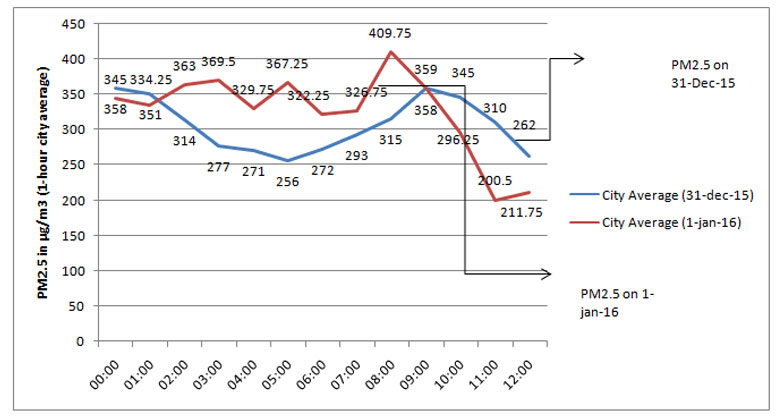

A comprehensive study the Centre for Science and Environment shows that air pollution in Delhi dipped after the odd-even formula was rolled out on January 1


Even though it is too early to comment on the potential impact of the odd and even formula on air pollution trends in Delhi soon after it was rolled out on January 1, 2016, the signs are optimistic. The Centre for Science and Environment (CSE) had tracked the hourly changes in PM2.5 trends the previous day and compared this with the day of the roll out. The results show a sharper and quicker drop in air pollution levels after the programme commenced at 8 am in the morning of January 1.
This is evident from the real time monitoring by the Delhi Pollution Control Committee in different locations of Delhi. This has provided clinching evidence that if traffic volumes on the roads are cut drastically as it happened on January 1 when the even number cars were off the road and overall traffic volume was low with most institutions closed, pollution levels were lowered.
There is a clear pattern in PM2.trends during day and night between December 30 midnight and January 1. The PM2.5 levels at night on December 31 were higher than that of December 30, when New Year celebrations witnessed significant fire-cracker bursting. In fact, the PM2.5 levels hovered above 350 microgramme per cum after midnight and peaked to over 400 in the wee hours of the morning. But the morning of January 1 shows a clear sharp fall in levels compared to the previous morning of December 31.
On the morning of January 1 around 9 am, the PM2.5 levels equalised with the levels observed in the same hour the previous day. But during the subsequent hours through the morning and afternoon when the odd and even was underway, it further dropped and was lower by 14 per cent to more than 35 per cent compared to the levels during the same hours the previous day.
This decline happened even though the wind speed on January 1 was much calmer than the previous day. In fact December 31 had double the wind speed than January 1. In normal circumstances the pollution level on January 1 should have been higher. But it was not.
This indicates if traffic volume is reduced it can have an impact on air quality of Delhi. This signals the need for more enduring measures that will help to curb traffic in the city.
The larger message of the day is that if Delhi succeeds in curbing car congestion, it can make its public transport much more efficient. The first day of implementation has shown how low traffic volumes on arterial roads enabled public transport—buses, autos and taxis to move fast and improve the overall journey speed of the commuting majority in the city. This proves that the city would need more systemic and enduring reforms to restrain car congestion with parking and tax measures, integrated public transport systems, walk and cycling augmentation to make a difference to the quality of air.
Trend in PM2.5 levels on the first day of odd and even formula and the previous day

Source: Based on real time data of Delhi Pollution Control Committee
We are a voice to you; you have been a support to us. Together we build journalism that is independent, credible and fearless. You can further help us by making a donation. This will mean a lot for our ability to bring you news, perspectives and analysis from the ground so that we can make change together.

Comments are moderated and will be published only after the site moderator’s approval. Please use a genuine email ID and provide your name. Selected comments may also be used in the ‘Letters’ section of the Down To Earth print edition.